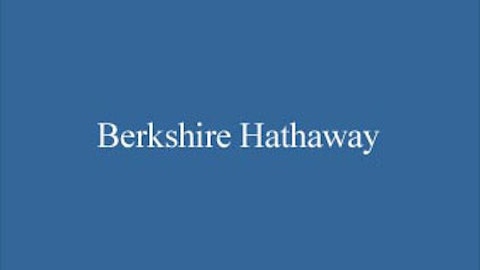
That’s roughly how much one share of Berkshire Hathaway Inc. (NYSE:BRK.A) stock is selling for these days.
Imagine if you had been one of the fortunate few to invest in Warren Buffett’s young company back in 1967, when shares were trading for $20.50. Right now, you would be sitting on a total nominal gain of 829,460%.
But nowadays, Berkshire Hathaway Inc. (NYSE:BRK.A) has, to some degree, become a victim of its own success. Buffett has often said that the company’s current size ($278 billion market cap) has made future growth more difficult.
“Size is the anchor of performance. There is no question about it,” Buffett has said. “It doesn’t mean you can’t do better than average as you get larger, but the margin shrinks.”
Of course, having too much money is a problem most of us would like to have. And I certainly don’t mean to imply that Berkshire is a bad investment.
But it does beg the question — are there any other publicly traded companies that could be the next Berkshire? Are there any companies currently on the market that share Buffett and partner Charlie Munger’s penchant for value investing, long-term holdings, and the use of insurance float to generate big returns?
While many investing firms have sought to imitate Berkshire Hathaway Inc. (NYSE:BRK.A)’s success over the years, I’d like to tell you about one company in particular that’s on track to follow the same path.
Like Berkshire, Alleghany Corporation (NYSE:Y) is an investment holding company that uses a value-oriented strategy to acquire interests in businesses and equity holdings. And, like Berkshire Hathaway Inc. (NYSE:BRK.A), it generally holds these investments for long-term periods. Through subsidiaries such as RSUI Group, Capitol Transamerica, Pacific Compensation and Transatlantic Holdings, the company sells specialty insurance and property-casualty insurance.
In 2012, the company gained exposure to the reinsurance industry through its acquisition of Transatlantic Holdings. Alleghany Corporation (NYSE:Y) also owns real estate and minority stakes in energy-related companies.
While its $6.4 billion market cap is much smaller than Berkshire Hathaway Inc. (NYSE:BRK.A)’s, Alleghany Corporation (NYSE:Y)uses a similar strategy to generate returns. It collects insurance premiums paid by customers and invests this money (called float) for its own benefit. This is the same strategy that Berkshire has successfully employed for years through such insurance holdings as GEICO and General Re.
StreetAuthority investing guru Amy Calistri has covered the profitable opportunities from this ingenious investing strategy many times. In her October 2012 issue of Stock of the Month, she wrote:
“Reinsurance companies profit by collecting more premiums than they pay out in claims. But they can make much more money if they invest those premiums wisely.”
Alleghany Corporation (NYSE:Y)’s recent acquisition of Transatlantic Holdings has produced exceptional returns. The company doubled pretax earnings for the first quarter of this year compared with the same period last year. Core specialty insurance holding RSUI Group reported underwriting income of $57 million, up 30% from the year before.
At the close of 2012, Alleghany reported common stockholders’ equity per share of $379.13, a 10.8% increase over the previous year.
These results come in spite of significant losses due to Hurricane Sandy, which cost the company a reported $268 million in claims.
For the five-year period that ended Dec. 31, 2012, the company reported that common stockholders’ equity per share increased at a compound annual rate of 6.1%, compared with a compound annual rate of return of 1.6% for the S&P 500 over the same time.
The company is trading at a forward price-to-earnings ratio of 12 and a price-to-book ratio of 1.0. Analysts predict annual revenue to grow at a rate of 6% over the next seven years. Return on equity is forecast at 10% in the short term but should rise to 12% once the Transatlantic acquisition is fully integrated.
The firm uses growth in book value as the metric for compensation in the form of restricted stock. This system helps keep management’s interests aligned with shareholders’.
Management has also indicated that it plans to begin making private equity investments, which, if done correctly, could lead to additional growth opportunities.
Risks to Consider: To finance the Transatlantic deal, Alleghany issued roughly $2.7 billion worth of stock. While the deal appears to have been a success, issuing new shares to pay for acquisitions (as opposed to using existing capital) can be a risky proposition if the deal doesn’t work as planned. In this respect, the company differs significantly from the strategy employed by Berkshire, which doesn’t issue new shares to fund an acquisition.
In addition, insurance companies are subject to unpredictable losses stemming from events such as natural disasters or terrorist attacks.
Action to Take –> Alleghany Corporation (NYSE:Y) appears to be fairly valued at today’s prices. While it may never achieve the lofty heights that Berkshire Hathaway has attained, it remains a solid, stable company that has outperformed the broader market year after year.
Warren Buffett’s Top 5 Stocks
Buffett’s firm, Berkshire Hathaway, holds dozens of stocks. But these five make up 75% of its portfolio… worth $65 billion. Click here to get Buffett’s top 5 stocks plus his 16 latest buys, FREE.
.




